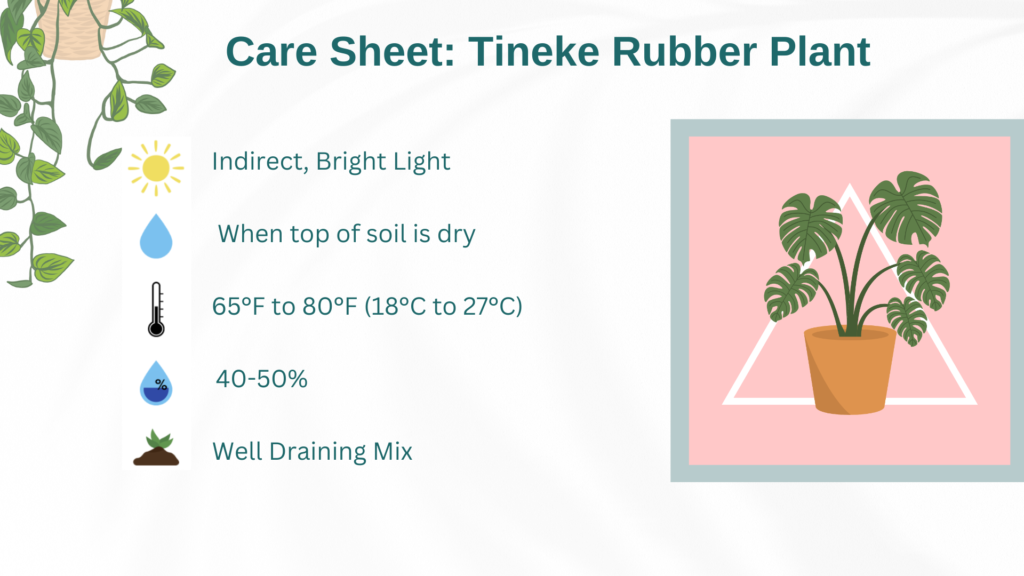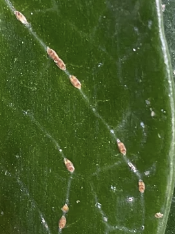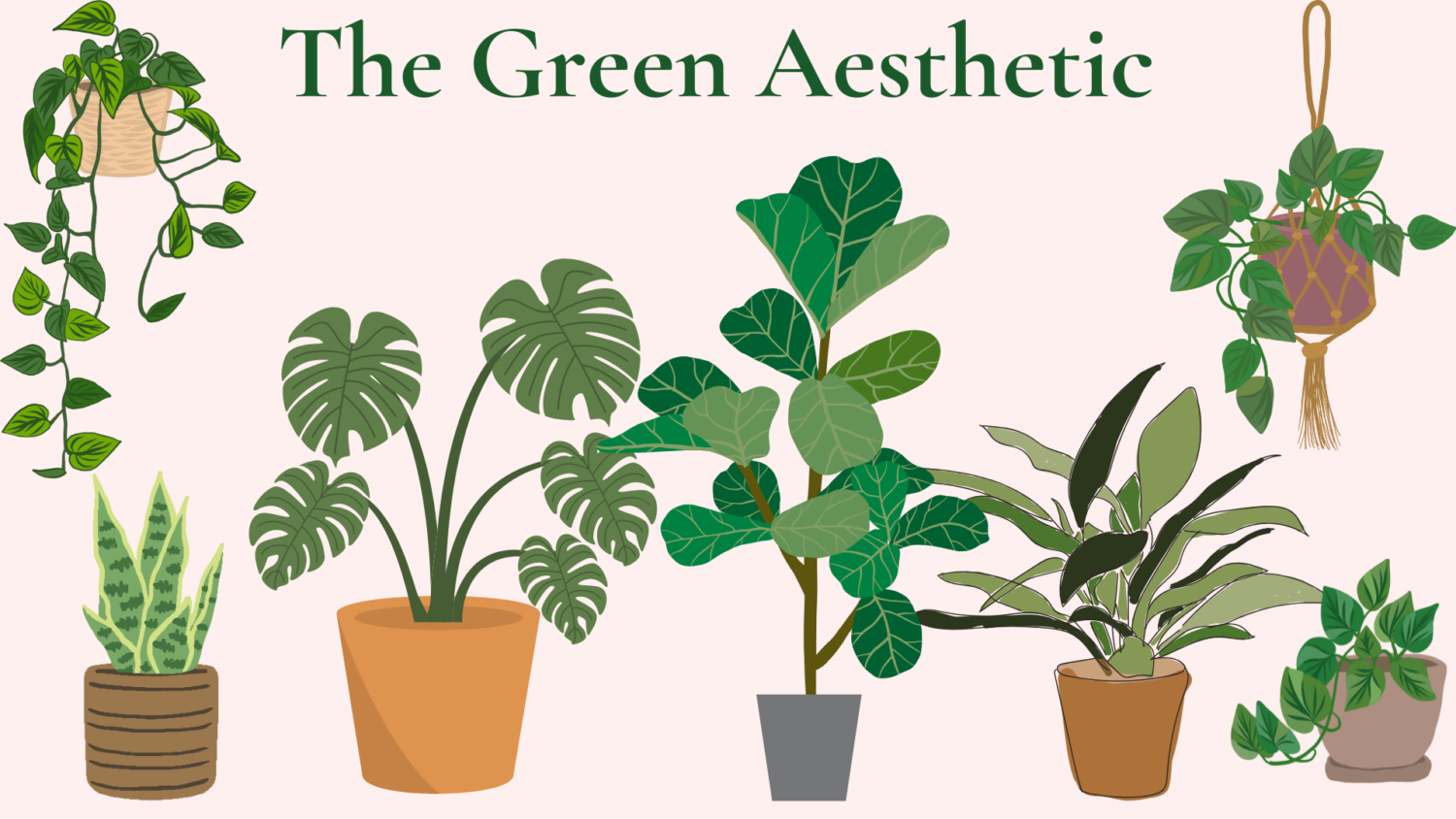The Tineke Rubber Plant, also known as Ficus elastica Tineke, is a beautiful, low-maintenance plant known for its large, variegated leaves in shades of cream, green, and pink.
Native to Southeast Asia, this stunning plant is one of my favorites for bringing a touch of the tropics into any home.
Despite its easy-going nature, a few essential care tips will help it thrive and bring out the best in those gorgeous, glossy leaves.
The Tineke Rubber Plant make fantastic indoor plants for several reasons. First, it has excellent air-purifying qualities, filtering toxins like formaldehyde to help improve indoor air quality. It’s also low maintenance, thriving with moderate watering and indirect light, which makes it easy to care for even in average household conditions.
Visually, its large, glossy leaves with striking variegation of green, white, and pink make it a beautiful statement piece in any room, adding a lush, stylish touch to home decor. With its blend of beauty and easy care, the Tineke Rubber Plant is perfect for both beginners and plant enthusiasts.
Size
In the right conditions, your Tineke Rubber Plant can grow to impressive heights indoors, up to 6-8 feet tall. While it starts small and manageable, it can easily become a striking floor plant in a bright, spacious room. Its large, thick leaves and upright growth make it a standout in any plant lover’s collection.
Care

Light
Light is one of the most crucial factors for keeping your Tineke Rubber Plant happy. Bright indirect sunlight is ideal; placing it near an east-facing window with some sheer curtain protection is perfect for preventing its leaves from getting scorched. In lower light conditions, this plant can survive, but it won’t grow as fast or have as vibrant colors. If you’re worried about your plant getting much bright light during the winter months, try moving it closer to a natural light source, like a west-facing window, or use a grow light to give it a little boost.
Water
The Tineke Rubber Plant doesn’t need much water, but it does like consistency. During the active growing season (spring and summer months), water it when the top inches of soil feel dry, and make sure your pot has drainage holes to avoid root rot. In fall and winter, you can dial back the watering as its growth slows down. Overwatering can lead to yellow leaves and root rot, so if in doubt, it’s better to hold back a little. Using room-temperature water is also a good idea—cold drafts and icy water are not a Tineke’s friends!
Temperature
The Tineke Rubber Plant prefers warm temperatures, ideally between 65-80°F. Sudden temperature changes, like cold drafts, can stress the plant, leading to leaf drop. Keep it away from air conditioning vents and open windows in winter. In a cozy indoor environment, it’ll do just fine and continue to reward you with lush new growth.
Humidity
The average household humidity level (around 40-50%) is usually enough for this plant, but it will appreciate extra humidity, especially in drier climates. A pebble tray or a small humidifier nearby can be helpful, particularly during winter when the air gets drier. If you see brown spots forming along the edges of the leaves, it could be a sign that the plant needs more humidity.
Soil
For soil, Tineke Rubber Plants need a well-draining mix. A regular indoor potting mix with some added perlite or orchid bark works great for drainage. Good drainage is key to preventing root rot, so a pot with sufficient drainage holes is a must. The potting mix should retain a bit of moisture but never be soggy.
Fertilizer
Fertilize your Tineke Rubber Plant during the growing season (spring through early fall) with a balanced, water-soluble fertilizer every 4-6 weeks. This helps support healthy growth and keeps the leaves vibrant. In the winter months, there’s no need to fertilize, as the plant’s growth slows down. Avoid giving too much fertilizer, as it can lead to brown leaf tips.
Potting
Repot your Tineke Rubber Plant every 1-2 years or whenever you notice its roots filling up the pot. Choose a pot that’s just one size up to avoid excess soil that retains too much water. Fresh soil and a slightly larger pot will give your plant room to grow, especially if it’s putting out new leaves regularly. Repotting is best done in early spring before its active growing season.
Pruning
Pruning isn’t necessary for a Tineke, but it can help you shape the plant and remove any dead or yellowing leaves. You can also prune the top to encourage bushier growth if it starts getting too tall. Use clean, sharp scissors to avoid damaging the plant, and wear gloves to protect your skin from the milky sap, which can cause mild irritation.
Propagation
If you’d like to grow more Tineke Rubber Plants, propagation is straightforward through stem cuttings. Take a healthy stem with a few leaves attached, dip it in rooting hormone, and place it in water or moist potting mix. Over time, roots will form, and you can pot it as a new plant. Propagation is best done in early spring for faster root development.
Pests

The Tineke Rubber Plant is generally resistant to pests, but you might occasionally see spider mites or scale. If you spot any pests, wiping the leaves with a damp cloth and treating them with neem oil or insecticidal soap should do the trick. Regularly dusting the leaves with a microfiber cloth can also prevent pest build-up.
Diseases
Root rot is the most common disease for Tineke Rubber Plants, usually from overwatering or poor drainage. The best prevention is to check that the top inch of soil is dry before watering and to use well-draining soil. Watch for yellowing leaves and mushy roots, as these are signs of root rot. Repotting with fresh soil can often save the plant if caught early.
Is it Toxic?

The Tineke Rubber Plant (Ficus elastica ‘Tineke’) is considered toxic to both humans and pets if ingested. The plant produces a milky sap containing compounds like ficin and ficusin, which can cause mild to moderate irritation when in contact with skin and may lead to gastrointestinal issues if eaten.
For pets like cats and dogs, consuming any part of the plant may result in symptoms like drooling, vomiting, or loss of appetite. It’s best to keep this plant out of reach of curious pets and small children to avoid any accidental ingestion or skin irritation!
Common Issues
- Yellow Leaves: This could indicate overwatering, so check your watering routine and soil moisture.
- Brown Spots: Brown edges often signal a need for higher humidity or that the plant is too close to direct sunlight.
- Leaf Drop: Changes in temperature or moving the plant to a new spot can cause leaf drop, but it should recover as it adjusts.
The Tineke Rubber Plant is an easy-going, beautiful indoor plant that rewards you with vibrant, variegated foliage if given the proper care. With proper light, occasional watering, and attention to temperature and humidity, this stunning plant will bring a fresh pop of color to any room in your home. Happy growing!

